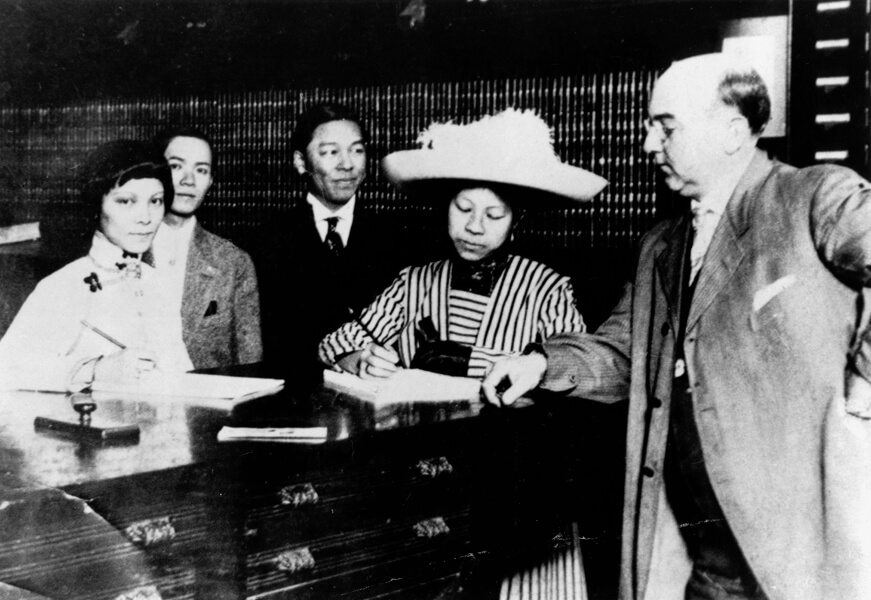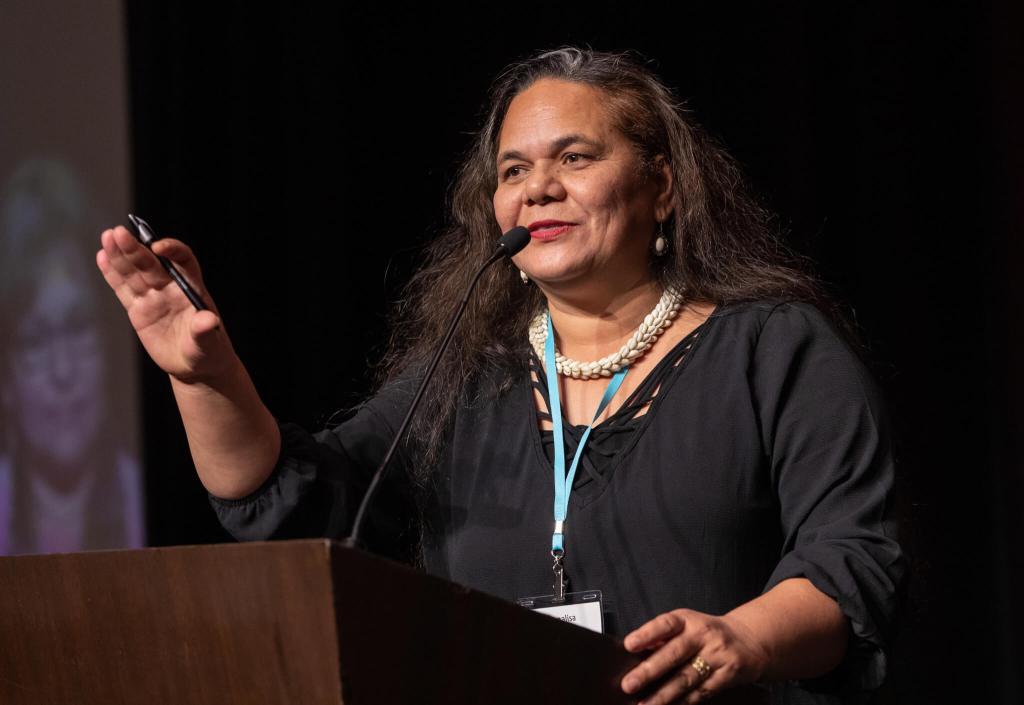Asian American and Pacific Islander contributions within Methodist mission
We celebrate the many ways in which the unique heritage and calling of Asian Americans and Pacific Islanders have shaped the history of Methodist mission. Read the stories of individuals who dedicated their life to God and helped expand the reach of Methodism.

Founder of Japanese American Methodism;
Missionary to Hawaii and Japan
Kanichi Miyama (December 2,1847-July 29,1936)
Kanichi Miyama, a native of Japan, born in Choshu province, was of Jomura rank (Samurai, soldier-bureaucrat class). Miyama imbibed the classic Shinto tradition before studying Western science and philosophy, military strategy, and English. Failing the entrance exam for the Military Academy, he worked for the Japanese Department of Defense, then started his own business. When it failed, he decided to move to the United States, hoping to improve his English and business skills.
In 1877, when only 50 or 60 Japanese had arrived in San Francisco, Kanichi Miyama began to receive Christian instruction from Otis Gibson of the Chinese Mission and later joined the church. He was about 28 at the time of his conversion.
In 1881, Miyama began preparation for ministry. He had been instrumental in leading seven of his countrymen to be baptized in the previous year. In 1884, he was admitted on trial to the California Annual Conference, the first Japanese person ordained in the U.S., and commenced ministry among Japanese immigrants.
The first company of Japanese immigrants arrived in Hawaii in 1885. Two years later, Japanese Methodists in San Francisco raised $200 and sent Miyama to locate the group and find out what they needed. He preached his first sermon in Queen Somna’s Hall on October 2 and organized a Japanese Mutual Aid Society a week later to help them gain an economic and social foothold. Preceding the 1888 session of the California Conference, Miyama was appointed to the Hawaiian Mission, where he “labored with great zeal and effectiveness” before returning to San Francisco in August of 1889.
Miyama returned to Japan in 1890 and founded the Ginza Church in Tokyo. He went on to found churches in the cities of Nagoya and Kamakura. He was also a great advocate for the temperance movement.
Adapted by David W. Scott from Wade Crawford Barclay, History of Methodist Missions, Vol. 3: Widening Horizons, 1845-95. (New York: The Board of Missions of The Methodist Church, 1957), 292-294; and Charles Volney Anthony, Fifty Years of Methodism: A History of the Methodist Episcopal Church Within the Bounds of the California Annual Conference from 1847 to 1897. (San Francisco: Methodist Book Concern, 1901), 398.

Founding social service organizations, working for women’s rights, and furthering the general welfare of Chinese Americans
Charles Goodall Lee (1881-1973)
Clara Elizabeth Chan Lee (1886-1993)
The marriage of Charles Goodall Lee and Clara Elizabeth Chan brought together two prominent families from the Chinese Community Methodist Church in Oakland, California, originating from one of the missions established in the San Francisco area of California in 1887 by the Rev. Otis Gibson, a former missionary to China. The Lee family took to heart the Methodist tradition embodied by the Chinese Community Methodist Church – community involvement and working for social justice.
Charles Goodall Lee was born in San Francisco, the son of Lee Tong Hay, a lay leader in the Chinese Methodist movement who later became ordained and served as the pastor of the Chinese Community Methodist Church in Oakland. Charles Lee studied dentistry at the University of the Pacific and became the first licensed Chinese American dentist in the United States. Following in his father’s footsteps, Charles Lee became a prominent lay leader of the Chinese Community Methodist Church. He was also one of six Chinese American men to establish the Chinese American Citizens Alliance in Oakland. As a member of the Oakland Lodge, Lee fought for civil rights, equal economic and political opportunities, and the general welfare of Chinese Americans.
Clara Elizabeth Chan was born in Portland, Oregon, the daughter of the Rev. Chan Ho Fun, who pastored the Chinese Community Methodist Church from 1900 to 1909. She and Emma Tom Leung were the first Chinese American women to register to vote in the United States, having registered in California after the passage of its suffrage bill, Proposition 4, nine years before the U.S. Nineteenth Amendment to the Constitution, which granted women the right to vote nationwide. She was a founder of the Chinese Women’s Jeleab (self-reliance) Association, which promoted women’s rights in the United States and in China.
Charles and Clara were both members of the Lee Family Benevolent Association. Founded by Chinese immigrants in the 1800s, the benevolent associations were social service organizations for new Chinese immigrants organized by their last names, which indicated their home villages in China.
Source material: “Brief History of Oakland Lodge,” by Christina Yu, Chinese American Citizens Alliance – Oakland Lodge. Chinese American Citizens Alliance — Oakland Lodge (cacaoakland.org). Wikipedia, Charles Goodall Lee, Charles Goodall Lee – Wikipedia. Chinese Community United Methodist Church, history: https://www.chinesecommunityumc.org/our-history.

The grounding for my life and the life of my family: our Kahuku UMC
Pacific Islander Ministry Plan – 2012
By Monalisa Tui’tahi
Monalisa Tui’tahi, a member of the United Methodist Pacific Islander Caucus and a key contributor and drafter of the Pacific Islander Ministry Plan, reflects on Pacific-Islander immigration and the need for continued support of new immigrant groups in the United States.
The United Methodist Pacific Islander Ministry Plan seeks to empower relatively recent immigrants to the United States. The first generation is just beginning to get older now. My parents, who arrived from Tonga in the mid-1970s, were part of the early Pacific-Islander migration – which really boomed in the 1980s. Pacific Islanders who come from Methodist traditions are Samoan, Fijian and Tongan, and to a lesser extent, people from the Marshall Islands and U.S. Pacific territories, such as Guam. After people arrived, they migrated and settled in pockets of the West – Hawaii, California and Utah.
Like most Pacific Islanders, neither of my parents spoke English, and they lived a Tongan life on the North Shore of Oahu in Hawaii. My dad, who had immigrated to Hawaii a little earlier, found a group of Tongans in relationship with a little church on the North Shore called Kahuku United Methodist Church. When we settled there in 1976, we immediately moved into that congregation, which had a Tongan language ministry. We didn’t miss a beat in our faith experience.
That was the grounding for my family’s life, a church that sounded like home and did everything we had done in Tonga. It was a foundational place for all our new immigrant experiences – not just for our family, but for many Tongan families. Kahuku UMC fed the spirit of those who wanted to attend church as they had known it, but who also needed to be a part of, find an identity with and be connected to the church in the United States. I grew up living into and experiencing the fullness of that kind of church.
The catalyst for the work of the Pacific Islander Ministry Plan has been to bring into alignment this people, whose whole identity and life has been wrapped around involvement in the work of the church in a different setting, culture and language. The United Methodist Pacific Islander Caucus was the driving force for bringing the plan into fruition.
Monalisa S. Tuitahi is an attorney in California and a member of the Pacific Islander Caucus of The United Methodist Church. Her husband, the Rev. Dr. Siosaia Tuitahi, is the pastor of First UMC of Santa Ana in the California-Pacific Annual Conference. This reflection has been reprinted from an earlier article in New World Outlook (July-Aug 2014), two years after General Conference approved the Pacific Islander Ministry Plan.

